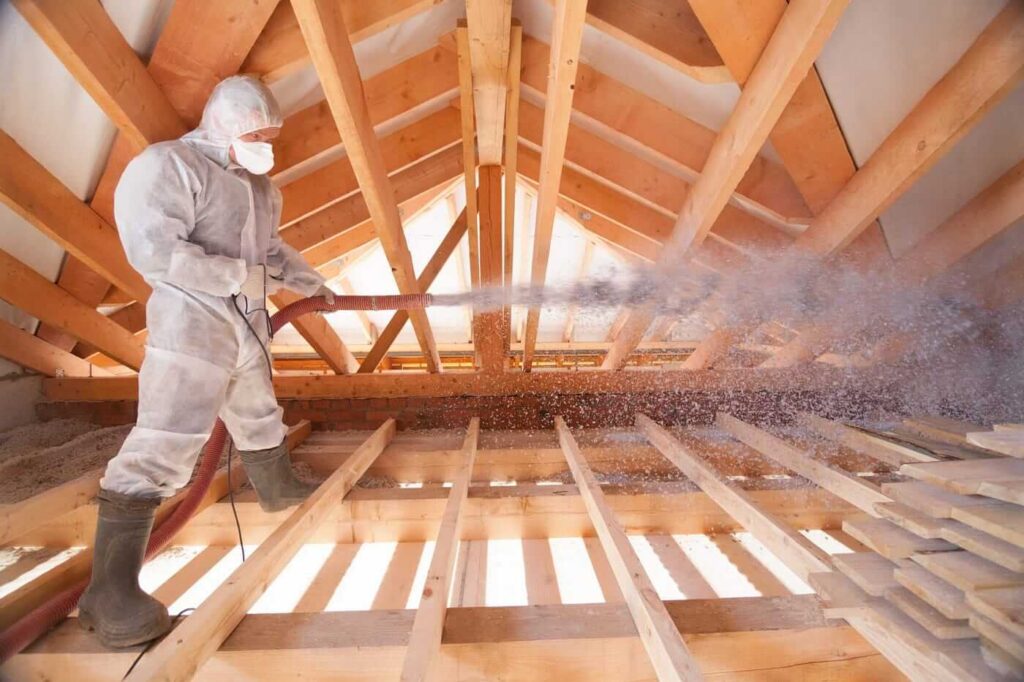Unveiling the Benefits of Spray Foam Insulation: A Modern Solution for Energy Efficiency

Spray foam insulation
In the realm of home insulation, spray foam insulation is rapidly gaining popularity due to its superior performance, versatility, and energy efficiency. This modern insulation solution offers a host of benefits that can significantly enhance the comfort and energy efficiency of your home. This blog will explore what spray foam insulation is, its benefits, installation methods, and why it could be the perfect choice for your insulation needs.
What is Spray Foam Insulation?
Spray foam insulation is a type of insulation that is applied as a liquid and then expands into a foam. It is made from a combination of isocyanate and polyol resin, which react when mixed to create a foam that expands and hardens. This foam can be sprayed into walls, ceilings, floors, and other cavities, providing a high-performance insulation layer that offers excellent thermal resistance and air sealing properties.
Types of Spray Foam Insulation
There are two primary types of spray foam insulation: open-cell and closed-cell.
- Open-Cell Spray Foam: This type of foam has a lower density and is more flexible. It is typically used for interior applications such as walls and attics. Open-cell spray foam provides good insulation and soundproofing but is less resistant to moisture compared to closed-cell foam.
- Closed-Cell Spray Foam: This foam has a higher density and is more rigid. It provides superior insulation, air sealing, and moisture resistance, making it suitable for both interior and exterior applications. Closed-cell spray foam is often used in areas that require additional structural strength and moisture barrier properties.
Benefits of Spray Foam Insulation
- Superior Insulation Performance Spray foam insulation boasts a high R-value, which is a measure of thermal resistance. This means it provides excellent insulation, keeping your home warm in the winter and cool in the summer. The foam’s ability to expand and fill gaps and cracks ensures a continuous insulation barrier, minimizing heat transfer and air leakage.
- Air Sealing and Moisture Control One of the standout features of spray foam insulation is its ability to act as an effective air barrier. When applied, the foam expands to fill even the smallest gaps and cracks, preventing air infiltration and exfiltration. This air sealing capability not only enhances energy efficiency but also helps to control moisture, reducing the risk of mold and mildew growth.
- Enhanced Structural Strength Closed-cell spray foam adds structural strength to buildings. Its rigidity and density help to reinforce walls and roofs, making them more resistant to wind and other external forces. This added strength can be particularly beneficial in areas prone to extreme weather conditions.
- Soundproofing Spray foam insulation, especially open-cell foam, provides excellent soundproofing qualities. The foam’s ability to fill gaps and crevices helps to dampen sound transmission, making your home quieter and more comfortable. This can be particularly advantageous in urban areas or homes located near busy roads.
- Longevity and Durability Spray foam insulation is highly durable and long-lasting. Once applied, it does not settle or degrade over time, maintaining its insulating and air sealing properties for the life of the building. This durability translates to long-term energy savings and reduced maintenance costs.
Installation Process
The installation of spray foam insulation should be carried out by trained professionals due to the specialized equipment and techniques required. The process involves several steps:
- Preparation: The area to be insulated is prepared by cleaning and sealing any large gaps or openings. Protective measures are taken to cover surfaces that should not be exposed to the foam.
- Application: The spray foam is applied using a spray gun. As the liquid foam is sprayed, it expands and hardens, filling cavities and creating a continuous insulation barrier.
- Curing: The foam needs time to cure and fully harden. Once cured, any excess foam is trimmed to ensure a smooth and even surface.
- Inspection: A thorough inspection is conducted to ensure the foam has been properly applied and all areas are adequately insulated.
Considerations and Limitations
While spray foam insulation offers numerous benefits, there are a few considerations to keep in mind. The initial cost of spray foam insulation is higher compared to traditional insulation materials. However, the long-term energy savings and durability often justify the investment.
Additionally, proper installation is crucial to ensure optimal performance. Hiring experienced and certified professionals is essential to avoid issues such as improper curing or off-gassing.
Conclusion
Spray foam insulation is a cutting-edge solution that offers superior insulation, air sealing, and moisture control. Its ability to enhance structural strength, provide soundproofing, and deliver long-lasting performance makes it an attractive option for homeowners seeking to improve energy efficiency and comfort.
By understanding the benefits and proper installation methods of spray foam insulation, you can make an informed decision that enhances the performance of your home and contributes to a more sustainable and comfortable living environment. Whether you are building a new home or upgrading an existing one, spray foam insulation can provide the modern, high-performance insulation solution you need.





